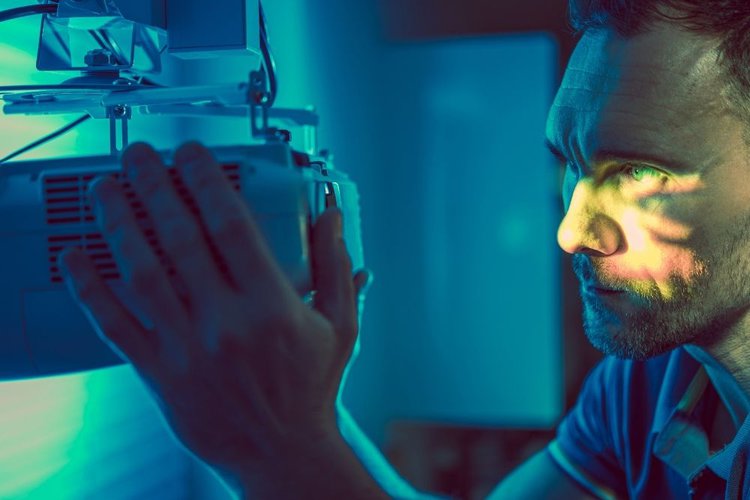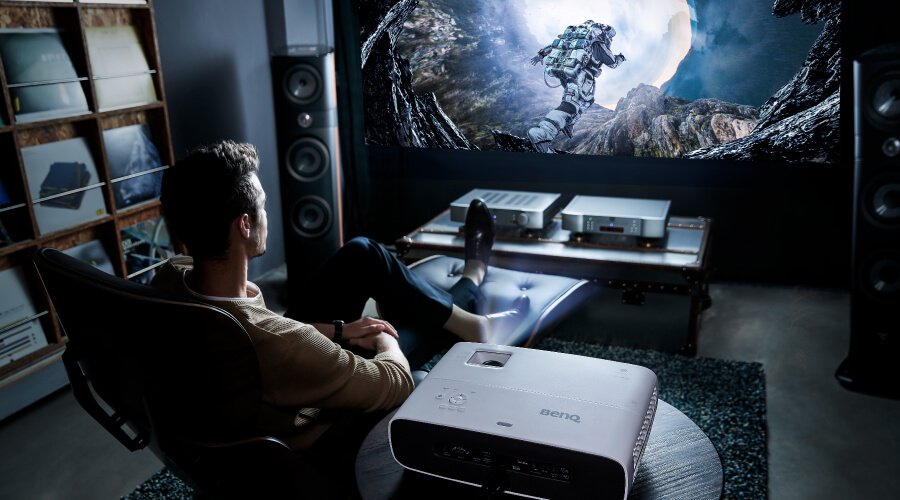
Are Projectors Better for Eyes Health?

In today’s technology-driven world, where screens are an integral part of our lives, concerns about eye health have become increasingly common. Numerous people contemplate whether projectors, a widely-used visual apparatus, offer a superior visual experience for the eyes in comparison to alternative choices like televisions or computer monitors. The purpose of this article is to elucidate this matter and present valuable perspectives regarding the influence of projectors on ocular well-being.
Understanding Projectors:

In order to grasp the impact of projectors on the health of our eyes, it is crucial to gain an understanding of their functionality and the diverse range of options available. Projectors employ light sources and lenses to display images on expansive surfaces, such as walls or projection screens. They exist in numerous forms, including home theater projectors, portable projectors, and business projectors, each tailored to fulfill specific needs.
Impact on Eyes:

When it comes to eyes, two primary concerns associated with projectors are eye strain and blue light emission. Prolonged exposure to bright screens can cause eye fatigue and discomfort, affecting one’s overall visual well-being. Additionally, the blue light emitted by electronic devices can potentially disrupt sleep patterns and contribute to digital eye strain.
Benefits of Projectors for Eyes Health:

Contrary to common misconceptions, projectors can offer several benefits for the eyes. Firstly, projectors tend to cause less eye strain due to their ability to produce larger images. This means that the eyes do not have to work as hard to focus on smaller details, reducing fatigue. Secondly, projectors allow for customizable screen sizes, enabling users to adjust the projection to a comfortable and optimal viewing size. Lastly, projectors often provide better visibility, particularly in dark or dimly lit environments, as they do not emit their own light like TVs or monitors.
Tips for Healthy Projection Viewing:
To ensure a healthy viewing experience with projectors, it’s important to follow certain guidelines. Firstly, it’s crucial to have optimal lighting conditions in the room where the projection takes place. Too much ambient light can diminish the projected image quality, leading to increased eye strain. Secondly, the screen placement should be at a comfortable height and distance to minimize neck strain and provide a relaxed viewing angle. Lastly, taking regular breaks during extended projection sessions helps prevent eye fatigue and strain.
Projectors vs. Other Display Devices:
When comparing projectors to other display devices such as televisions or computer monitors, there are several factors to consider. Projectors offer the advantage of larger screen sizes, making them ideal for immersive experiences. They also tend to produce less eye strain due to the absence of a backlit screen. However, projectors may not provide the same level of image sharpness and clarity as high-resolution televisions or monitors.
Conclusion:
In conclusion, projectors can be a viable option for those seeking a display device that is potentially better for eye health. With their ability to reduce eye strain, customizable screen sizes, and improved visibility in specific conditions, projectors offer advantages over other devices. However, it’s important to maintain healthy viewing habits and follow the recommended guidelines to ensure optimal eye health while using projectors.
FAQs
Are projectors suitable for prolonged use?
Yes, projectors can be used for extended periods as long as proper viewing habits are maintained, such as taking regular breaks and optimizing lighting conditions.
Can projectors cause permanent damage to the eyes?
When used responsibly and in moderation, projectors are unlikely to cause permanent damage to the eyes. However, it’s important to prioritize eye health and practice healthy viewing habits.
Do projectors emit more blue light than other devices?
Projectors typically emit less blue light compared to devices with backlit screens, such as televisions or computer monitors. However, it’s still advisable to limit exposure to blue light and take necessary precautions.
Can projectors help with vision-related conditions?
Projectors alone cannot cure or treat vision-related conditions. However, they may provide a more comfortable viewing experience for individuals with specific eye conditions by reducing eye strain.
What is the ideal distance for viewing a projected image?
The ideal distance for viewing a projected image varies depending on the specific projector and screen size. It’s recommended to refer to the manufacturer’s guidelines for optimal viewing distances.
Do you want to explore the world? please visit

